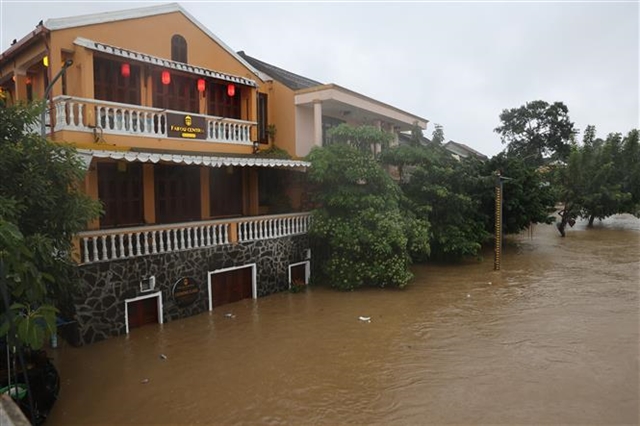 Society
Society

HCM City authorities are considering switching transport of goods from day to night because of traffic congestion during the day.

|
| Container trucks at Cát Lái Port in HCM City. The southern city's authorities are considering allowing trucks to transport goods at night only to prevent congestion in its urban areas. — VNA/VNS Photo Tiến Lực |
HCM CITY — The southern city's authorities are considering switching transport of goods from day to night because of traffic congestion during the day.
Speaking at a recent meeting, Võ Văn Hoan, vice chairman of HCM City People’s Committee, said that congestion was largely caused by trucks delivering goods and that goods transport at night could improve people’s quality of life.
HCM City currently has 28 traffic hotspots, mostly in densely urban areas and at airport gateways and Cát Lái Port.
Tuổi Trẻ (Youth) newspaper reported that traffic congestion had led to worsening air pollution.
A report from Uber and the Audience Project Company found that up to 76 per cent of HCM City residents suffer from traffic jams for 30 minutes per day, while 13 per cent have to deal with congestion for two hours or more per day.
Traffic jams waste 160 million hours yearly, causing economic losses of over US$1 billion per year for the city, the report said.
Manila in the Philippines is the most congested out of 278 cities in Asia, and HCM City ranked 10th. On average, people in HCM City spend about 48 per cent more time travelling during peak hours compared to casual periods.
Hoan said that potential problems must be carefully studied prior to carrying out the plan, he said. “Though labour costs will increase, the new plan has significant impact in terms of reducing social costs and improving life quality of locals."
At the meeting, authorities said they would conduct research and evaluate the impact of night transportation.
Transport enterprises
According to the city's Transportation Department, cargo transport volume in HCM City reached 460 million tonnes last year, up 5 per cent year-on-year, while goods transported via seaports reached 130.4 million tonnes, up 24 per cent year-on-year.
The HCM City Transportation Association added that its members have about 6,000 vehicles, while the total number of vehicles regularly circulating through the city is about 12,000 trucks of all kinds.
Bùi Văn Quản, head of the association, said that congestion was not only caused by goods transport but also poor planning. To prevent trucks from passing through the inner city, HCM City needs to have a thorough plan on relocating transport firms and bus stations and encouraging locals to move to suburban areas.
"Smooth goods transport is key to economic development," he said.
“Though business firms might agree to ship their goods during the night, will their partners be able to arrange sufficient labour to release the goods,” he said, adding that an increase in labour costs and inefficient cooperation could create problems.
“If relevant authorities do not evaluate the impact of the new plan carefully, it may encourage business firms to toss their circulation permits and sell their vehicles,” he said.
Meanwhile, Quang, head of a transport firm in District 9, said that efficient coordination among all firms would be required to make the new plan work.
“Also, when working night shifts, drivers often receive an additional amount of VNĐ500,000 to VNĐ1 million on top of their salary,” he added.
Nguyễn Ngọc Tường, deputy director of the city’s Transportation Safety Committee, said that the Transport Department has several months until June to develop a night plan and submit it to the city's People’s Committee. Feedback will then be gathered to review the plan.
“I believe the night plan has potential and is suited to the current situation in the city. We should take advantage of the night for smoother transportation,” he added. — VNS




